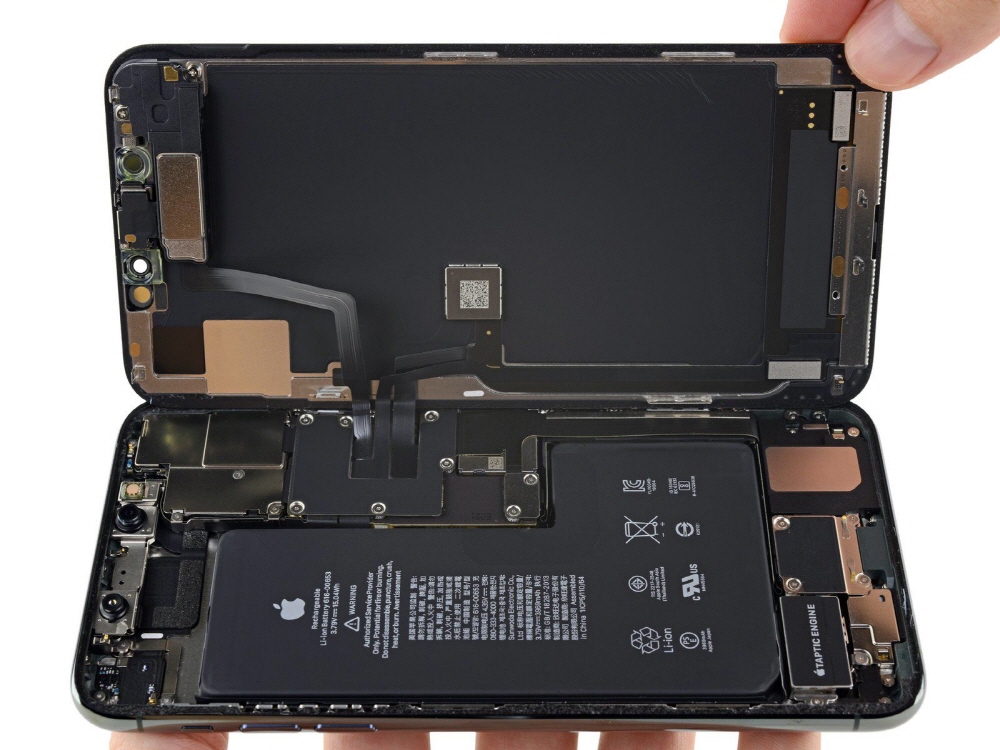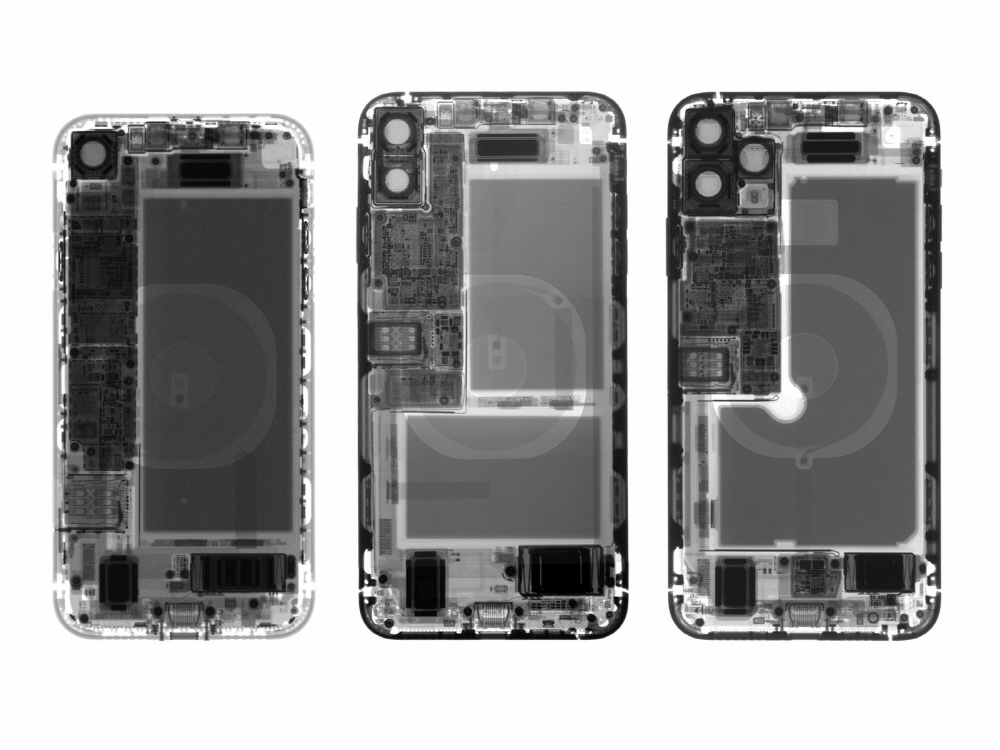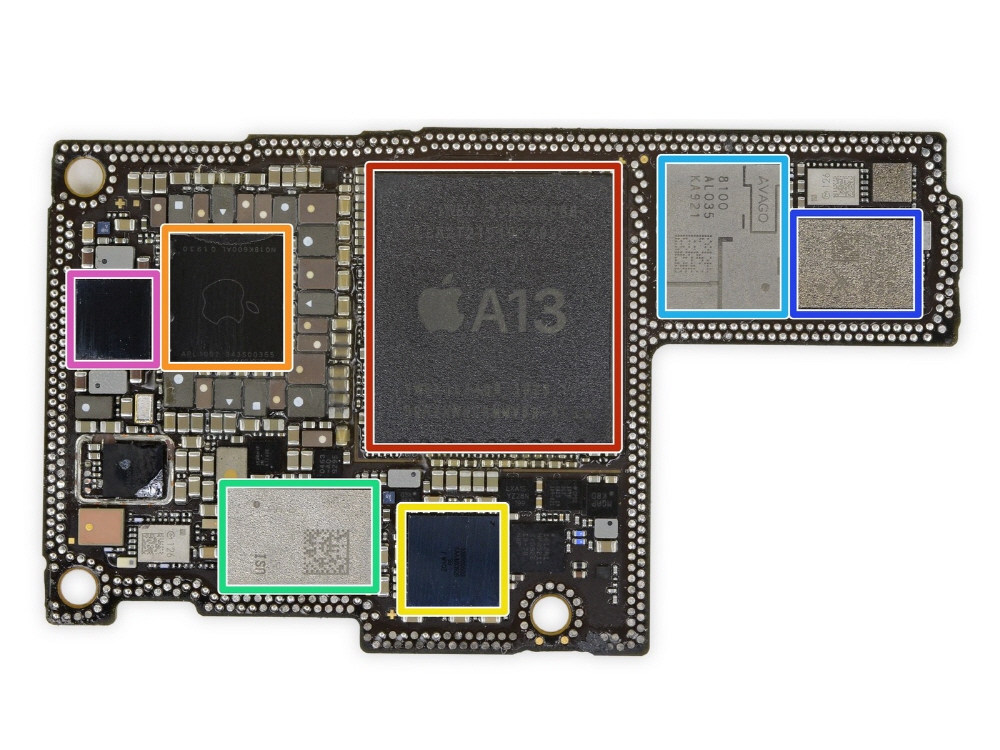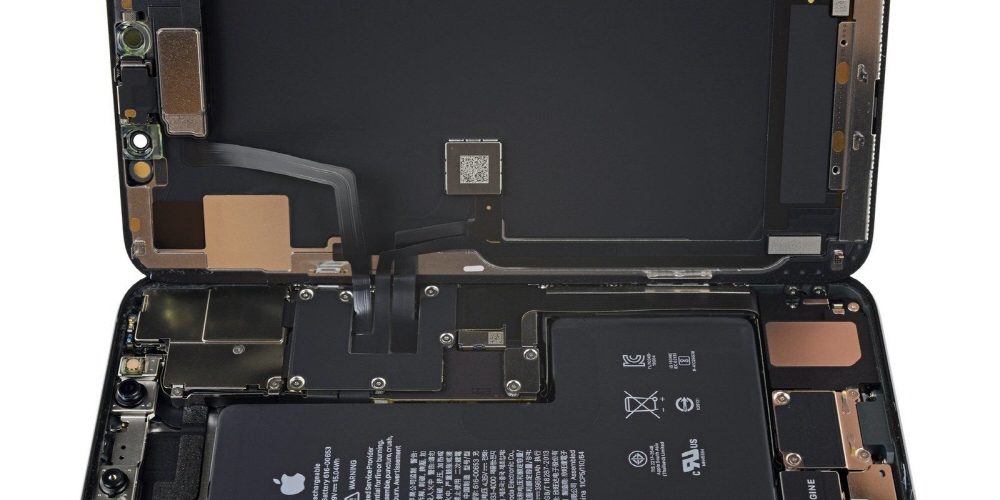
Apple recently announced the iPhone 11 series. IFixit quickly released the iPhone 11 Pro Max disassembly report, drawing attention. Accordingly, clues about the installed RAM capacity as well as the rumored two-way wireless charging function are becoming clear.
IFixin also takes a perspective view using X-rays and compares the iPhone 11 Pro Max with the iPhone XR and XS Max, which are models introduced last year, to deal with rough internal structure differences.
First, the body is physically disassembled using a screwdriver set or the like. Apple says that the waterproof performance is 30 minutes at a maximum depth of 4m, but the adhesive around the display looks similar to the previous year’s model. The logic board is made of two layers and is more dense than the iPhone XS Max. Also, the board looks like the iPhone 11 Pro, but the difference has not been confirmed yet.

You can see the amount of RAM installed around the A13 Bionic processor, which is Hynix RAM and is 4GB. One iOS developer (Steve-Troughton Smith) suggested that there might be more RAM, but so far it has not been discovered. The modem chip is equipped with Intel parts. As with the recent report, the battery capacity is 3,969mAh, which is 13g heavier than the iPhone XS Max.
Another focus is the presence or absence of hardware related to two-way wireless charging. This feature allows you to charge an AirPod case that supports wireless charging from the back of the device. Although the iPhone 11 series has been shown to be the most likely, it has not been revealed whether it will be installed.
Regarding this, famous columnist Ming-Chi Kuo and others say that the function seems to have been canceled because the charging efficiency did not meet Apple’s requirements. But Sony Dickson, who is familiar with Apple insider information, tweeted that the hardware was already built-in but disabled in software.

However, a mystery board was found under the battery in an X-ray perspective taken while starting the iFixit disassembly report. It is connected to the battery, the wireless charging coil, and the Taptic Engine. In addition, there are two battery connectors, so one more than last year’s model. If you disconnect the lower connector while the iPhone is turned on, you can charge it from the Lightning terminal, but wireless charging is not possible. In other words, the additional connector appears to be connected directly to the wireless charging coil. It is speculated that there may be a close relationship with two-way wireless charging.
It is said that when the connector is reconnected, a high temperature warning is instantaneous. In other words, this connector is connected to the battery temperature sensor, and it is said to have something to do with the ability to shut down from high temperature conditions. Even in two-way wireless charging, thermal management is essential.
Update: It’s my understanding bilateral inductive charging wasn’t pulled from the iPhones 11.
It was never slated for production and there isn’t anything in there that could be enabled later.
(It would also be dumb to ship it without Watch support…) https://t.co/vXQxM4T3Yf
— Rene Ritchie (@reneritchie) September 21, 2019
https://platform.twitter.com/widgets.js
In this regard, there may be hope that the day will come when the two-way wireless charging function is built-in as hardware and can be used through an iOS update, but some foreign media are denying that there is no such hardware.
The iFixit report is not final and will continue to be updated. Related information can be found here .


















Add comment